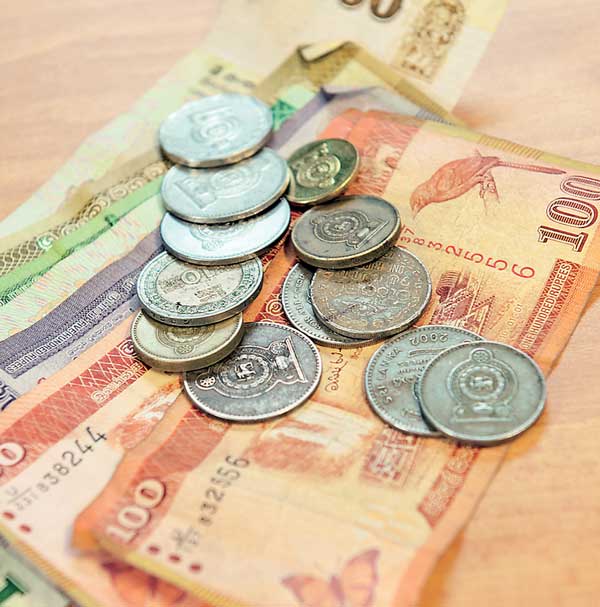Reply To:
Name - Reply Comment

By Oxford Business Group
Buoyed by a phased US $ 1.5 billion funding pledge from the International Monetary Fund (IMF), Sri Lanka has its sights set on building economic momentum and improving investor sentiment in the coming months.
Sri Lanka’s economy is expected to expand by 5 percent in 2016, the IMF said in a report issued in June, outstripping growth levels recorded for the previous two years. However, the country is under pressure to keep its programme of fiscal reforms on track.
“Sri Lanka’s medium-term growth prospects are generally favourable, given its strong base of human and physical capital and strategic position in a fast-growing and dynamic region,” the IMF said.
The IMF said growth would be underpinned by heightened construction activity and the continued expansion of the services industry, led by the tourism, transport and information communication technology (ICT) sectors.
Navigating headwinds
Despite the bright outlook, Sri Lanka faces several external challenges, including the cooling of the Chinese economy, which is eroding export earnings, and the slow pace of global recovery.
Falling oil prices also risk reducing inflows from Sri Lankan workers overseas, which would significantly impact the economy. Remittances account for 9 percent of gross domestic product (GDP) and represent the largest single source of foreign currency.
Economic headwinds have contributed to a fall in revenue and higher recurrent expenditure, which pushed the 2015 fiscal deficit up to an estimated 6.9 percent of GDP. Public debt levels climbed to 76 percent of GDP, up from 70.7 percent in 2014.
Support from IMF
In early June, the executive board of the IMF approved an extended fund facility (EFF) for the Sri Lankan government, authorising the lending of US $ 1.5 billion over a three-year period, and bringing total support to US $ 2.2 billion through multilateral and bilateral loans.
The funds will support Sri Lanka’s programme of economic reforms, while helping the country meet its balance of payment requirements.
The programme, which is built on six pillars – fiscal consolidation, revenue mobilisation, public financial management reform, state enterprise reform, flexible inflation targeting, and reforms to the trade and investment regime – is set to support Sri Lanka’s target of reducing the fiscal deficit to 3.5 percent by 2020.
The EFF will play a key part in helping the government reset its macroeconomic policies, according to IMF Deputy Managing Director and Acting Chair Min Zhu, while supporting its efforts to address key vulnerabilities, boost reserves and support stability and resilience.
“The economic programme also supports the government’s objective of boosting competitiveness and greater integration with regional and global markets through comprehensive trade reform and improvements to the investment environment,” he noted.
Reforms remain key
A commitment from the government to introduce the fiscal reforms agreed with the IMF will be key in helping Sri Lanka improve its ratings, according to Sagarika Chandra, Associate Director for Asia Pacific sovereigns at Fitch Ratings.
“From a rating standpoint, key drivers of ratings are really progress on the IMF programme and certain degree of predictability with policies,” Chandra said in mid-June.
Sri Lanka remains vulnerable to shifts in investor sentiment, Chandra noted, while high foreign currency debt could hurt debt ratios if the exchange rate depreciates.
In mid-February, Fitch downgraded Sri Lanka’s long-term foreign and local currency issuer default ratings to B(+) from BB(-) with a negative outlook, citing concerns over increased refinancing risks.
However, Sri Lanka has shown itself keen to move on reaching EFF compliance. The government has already taken steps to broaden its tax base, approving the reintroduction of a capital gains tax. Earlier this year, Sri Lanka increased its value-added tax from 11 percent to 15 percent, while also extending its coverage to include more goods and services.
There are also plans to lift restrictions on foreign exchange flows and allow free movement of funds in and out of the country. The move, announced in early June, would lift a long-standing regulation blocking the free repatriation of capital. Rescinding the regulation is expected to promote freer movement of funds and encourage foreign direct investment.
On target
Sri Lanka looks to be on track to meet the IMF’s growth projections for 2016, with GDP having expanded by 5.5 percent year-on-year (YoY) in the first quarter, according to data issued by the Census and Statistics Department in mid-June.
The financial services component of the economy delivered the strongest performance, expanding 15.9 percent in the first quarter, a reflection of the IMF’s assessment of the healthy state of the country’s banking system, while the services industry grew by a solid 4.9 percent for the quarter.
The construction sector performed strongly in the quarter, with activity increasing 12 percent YoY, while the industrial sector also posted growth, rising by 8.3 percent over the same period in 2015.